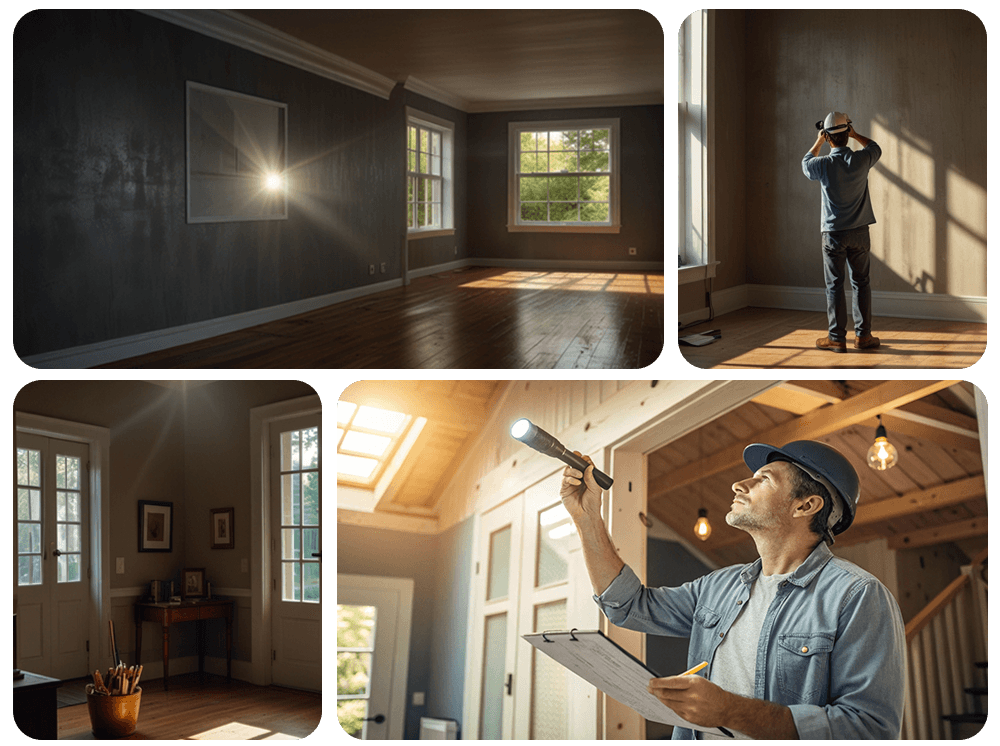When purchasing a home with a septic system, a thorough inspection is essential to avoid costly surprises after closing. Septic systems are a critical part of a home’s infrastructure, and understanding their condition before buying is key to making an informed decision. At 1st Choice Inspection Services TREC#9175, we specialize in septic system inspections and provide new homebuyers with detailed assessments to ensure they know exactly what they’re investing in.
Here’s what you can expect during a septic inspection and why it’s so important for new homebuyers.

A septic system is responsible for managing wastewater from your home, and if it isn’t working properly, it can lead to major issues like sewage backups, contamination, or costly repairs. For new homebuyers, a septic inspection is critical for identifying potential problems early, helping you avoid unpleasant surprises and protecting your investment.
Septic system repairs or replacements can cost thousands of dollars, so knowing the system’s condition before finalizing your purchase is essential. A professional inspection ensures the system is functioning correctly and can handle the demands of your household.
A septic inspection involves a detailed evaluation of the system’s components to ensure everything is in proper working order. Here’s what the process typically includes:
The first step of a septic inspection is locating the septic tank. In some cases, the location of the tank may be unknown, especially if the property has changed hands multiple times. Inspectors use specialized tools to locate the tank, and this process helps ensure there are no issues with its placement or access.
Once the tank is located, it’s opened for inspection.
Inspectors will check the liquid levels inside the septic tank to determine if the system is functioning properly. The tank’s levels should be within a normal range, and any significant deviations could indicate a problem, such as a blockage in the system or issues with the drain field.
Inside the septic tank, waste is separated into three layers: solids (sludge) at the bottom, a middle liquid layer, and fats and oils (scum) at the top. An inspector will measure the amount of sludge and scum buildup in the tank to determine whether it needs to be pumped.
If the layers of sludge or scum are too thick, the tank may not be able to effectively treat the wastewater, which can lead to backups or drain field problems.
Baffles are critical components in a septic system that direct wastewater flow and prevent solids from entering the drain field. During the inspection, the baffles will be checked for signs of damage, deterioration, or blockages. If the baffles are compromised, it could lead to clogs or even system failure.
Ensuring that the baffles are functioning correctly helps extend the life of your septic system and prevents unnecessary damage to the drain field.
The drain field is where wastewater is filtered and absorbed into the ground. During the septic inspection, the inspector will evaluate the condition of the drain field to ensure it’s properly dispersing water.
Some warning signs of drain field issues include:
If the drain field isn’t functioning as it should, repairs or replacements may be necessary, which can be expensive.
The inspector will look for any signs of leaks or damage in the septic tank, pipes, and connections. Cracks or leaks in the tank can allow untreated wastewater to seep into the surrounding soil, leading to contamination of the groundwater. This is a serious issue that must be addressed immediately.
Additionally, the inspector will check for signs of root intrusion from nearby trees or plants, which can damage the tank or pipes and disrupt the system’s operation.

Once the septic inspection is complete, you’ll receive a detailed report outlining the findings. This report will include any recommendations for repairs, maintenance, or pumping that may be needed.
As a new homebuyer, it’s important to review the report carefully and ask questions if anything is unclear. If significant issues are uncovered, you can use this information to negotiate with the seller for repairs or a price reduction, or you may choose to walk away from the deal if the problems are too extensive.
Even after you’ve purchased the home, septic system maintenance is essential. The general recommendation is to have your septic system inspected every three to five years, depending on the size of the tank and the amount of usage it gets.
Regular inspections help ensure that your system stays in good working order and can prevent costly repairs or replacements in the future.
As a homebuyer, there are a few red flags to watch for that could indicate potential septic system problems:
If you notice any of these signs during the home-buying process, a thorough septic inspection is critical.
For new homebuyers, a septic inspection is a vital part of the home-buying process. It helps identify any potential problems and ensures that the system is functioning properly before you finalize the purchase. At 1st Choice Inspection Services TREC#9175, we provide thorough septic system inspections and detailed reports so you can move forward with confidence.
By understanding the condition of the septic system upfront, you can avoid costly repairs and make an informed decision about your new home.
A typical septic inspection takes between 1 to 3 hours, depending on the size of the system and any issues that may arise during the inspection.
If the inspection uncovers problems, you can negotiate with the seller to have repairs made before closing or request a price reduction to cover the cost of fixing the issues yourself.
No, septic inspections are typically a separate service. Be sure to request one if the home you’re buying has a septic system.
Septic tanks generally need to be pumped every 3 to 5 years, depending on the size of the tank and how many people live in the home.
Common signs include slow drains, foul odors, standing water near the drain field, and sewage backups. If you notice any of these, it’s important to schedule a septic inspection right away.